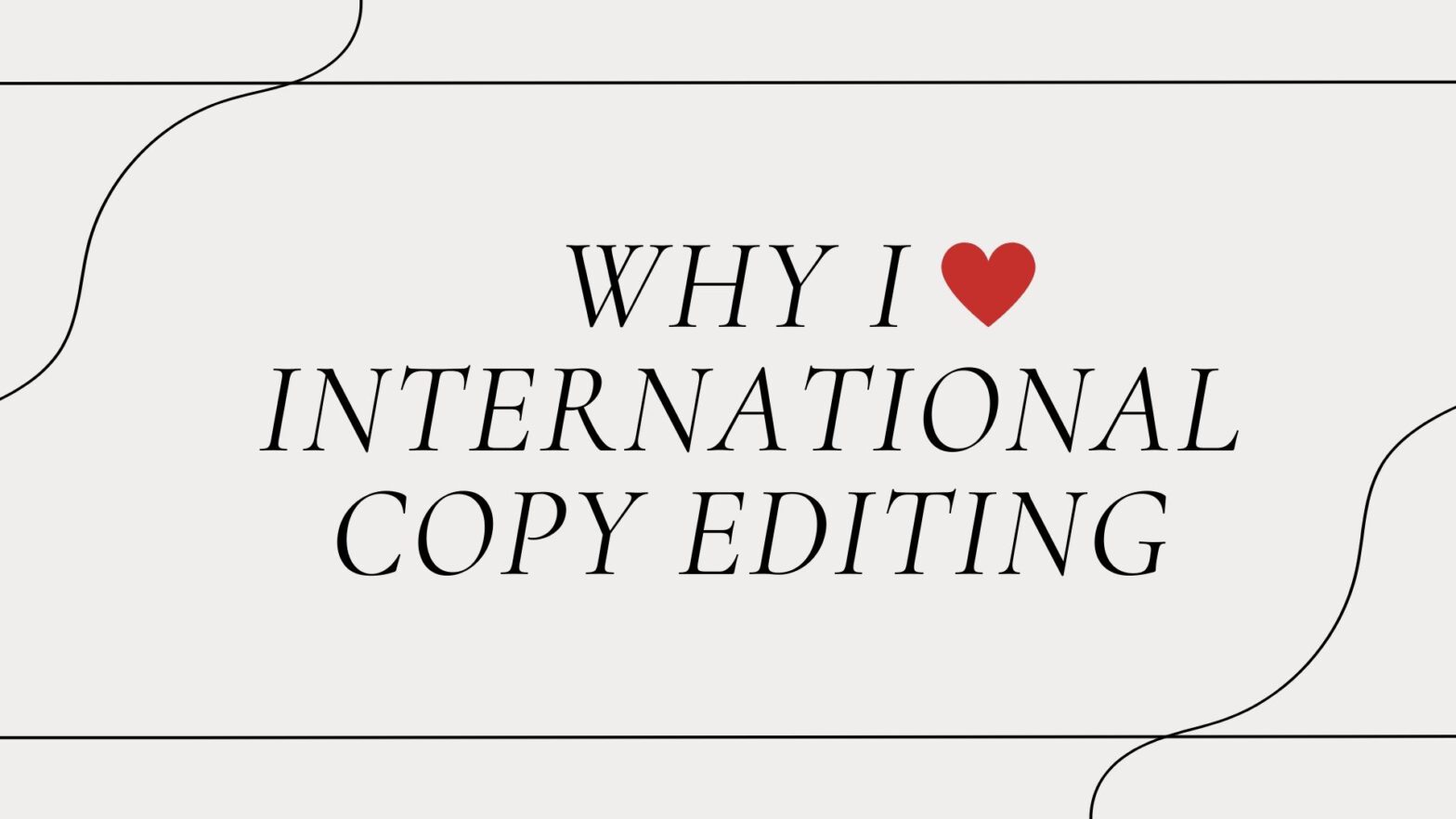Copy? You mean xeroxing?
No. I mean a text that is used to advertise a product or service. This can be a brochure, a presentation, a website, or an actual advertisement (about which, in all honesty, I don’t know much). And when I say „international copy“, I mean copy that originated in one country but is used in another.
Great copy can put the finishing touches on an already great product. But most copy isn’t born great; rather, it needs to be edited. The thought of editing fills most people with dread, but me with joy – here is why.
1. Copy Editing Is an Intellectual Challenge
This may sound paradox at first. It’s just marketing copy, what could be so intellectual? But where serious editing is required – i.e., more than just the odd stray comma – the process quickly requires full brainpower.
First of all, I have to gain enough of an understanding of the product to know whether the copy makes sense. I have to understand what message you are trying to convey to your prospective customers. I have to think about whether your message is relevant for Germany, or whether I can suggest any improvements. I have to to take into account any intercultural aspects. And I have to hunt for missing commas, of course.
My clients at the Canadian Embassy came from a huge variety of sectors. I dealt with, among other things, fashion, baby products, pet accessories, personal care products and kitchen gadgets. Each time a new client came along, I had to dig into the industry specifics so I would be able to give them meaningful advice. This was one of the most interesting aspects of that job.
2. A Challenge That Delivers Results
Poorly-drafted copy is painful to read. It doesn’t drive sales, it just frustrates readers. With well-edited copy, you see results.
This is true for any type of text. I once managed a software product for a German company. The user manuals had been translated from their German original, more or less word by word. German tends to construct very long sentences with lots of sub-clauses. Translated into English, they were basically incomprehensible. I cannot imagine how much our users must have suffered; most of them weren’t even native speakers of English. So I edited out everything that wasn’t necessary: the empty words, the long-winded expressions, the irrelevant explanations.
The result? A much shorter manual, easier to understand, easier to use. Better user results, more user happiness!
I love improving things, and I love helping people get better experiences.
3. It Also Requires Precision
If you want to sell, you have to be to the point. And yet, I’ve often been astonished by sales presentations or brochures that were vague, imprecise, long and poorly organized. How are your readers supposed to understand your product? Why should they buy it?
Editing such copy (and texts in general) requires a lot of precision. What to leave in, what to delete, what to change? This is a fantastic creative challenge for me. Often I can make improvements by simply reorganizing what is already there. Sometimes I need to edit the existing copy better: eliminate redundancies, choose better wording etc.. And sometimes I have to produce completely new copy, either to highlight the product better, or to tailor the copy to the market.
See my article How to Prepare a Great Sales Presentation for a quick 7-step guide.
4. Above All, It’s Fun
…and you can make me pretty happy by letting me work on any sort of text.
Language is such a gift. I have always loved working with language. I love writing (hey, I run a blog!), editing, hunting for the missing comma, making texts sound better. To me, the best thing about university was writing papers. Later I jumped on any opportunity to tear apart proofread friends‘ theses. Not sure my friends were necessarily thrilled to receive endless comments, but I like to think it helped them improve their thesis.
At least one of my friends appreciates my editing fervor. I now get to do the final proofreading for her small publishing house. I’ve also been helping her with her social media, newsletters and website. This is my dream combination – proofreading and writing for great products and an intellectual challenge to boot!
5. It’s Even More Fun When It’s Intercultural
International copy pretty much always has an intercultural component. This is where the fun begins, sometimes literally: the internet is full of cases of badly translated ads. Good to know it happens to global players too! But even when the language is the same, the culture can be very different. Any Austrian will tell you they are not like Germans at all, even though they speak German. Even within Germany, there are huge cultural differences. Just travel from Hamburg to Berlin to Cologne to Munich. You will experience four very different faces of Germany.
So when I work on international copy, I have to add another layer of thinking. This can be purely pragmatic – maybe the conditions under which your product operates at home do not exist in your target market, but your product fulfils another important function. It can also be more emotional – can your audience relate to your copy? What matters to them? This is an important process that also shows that „translating“ covers so much more than words.
